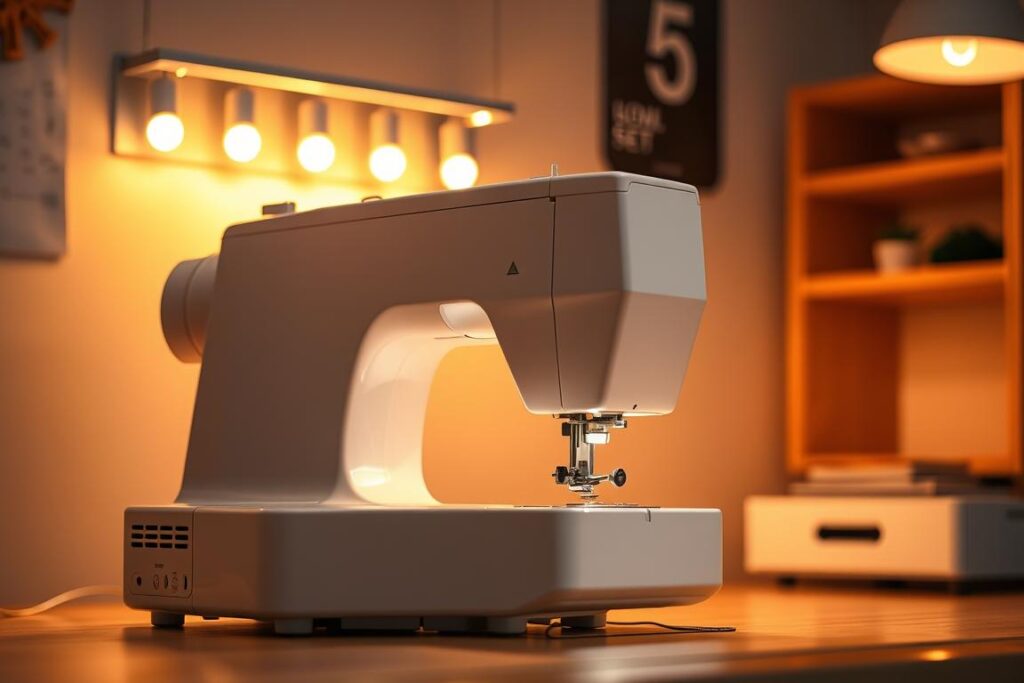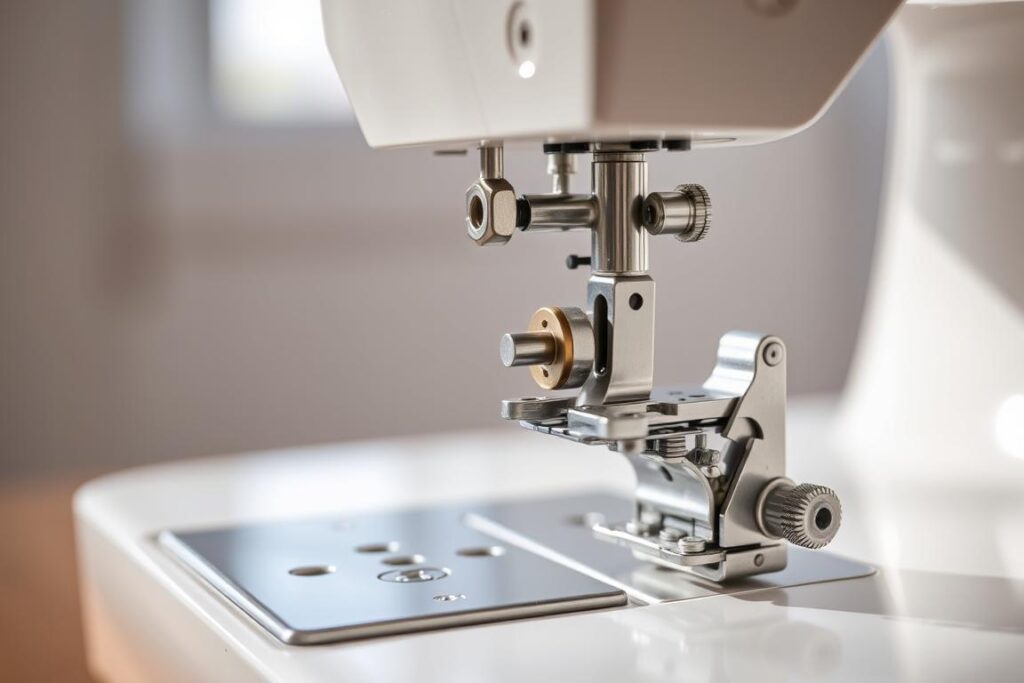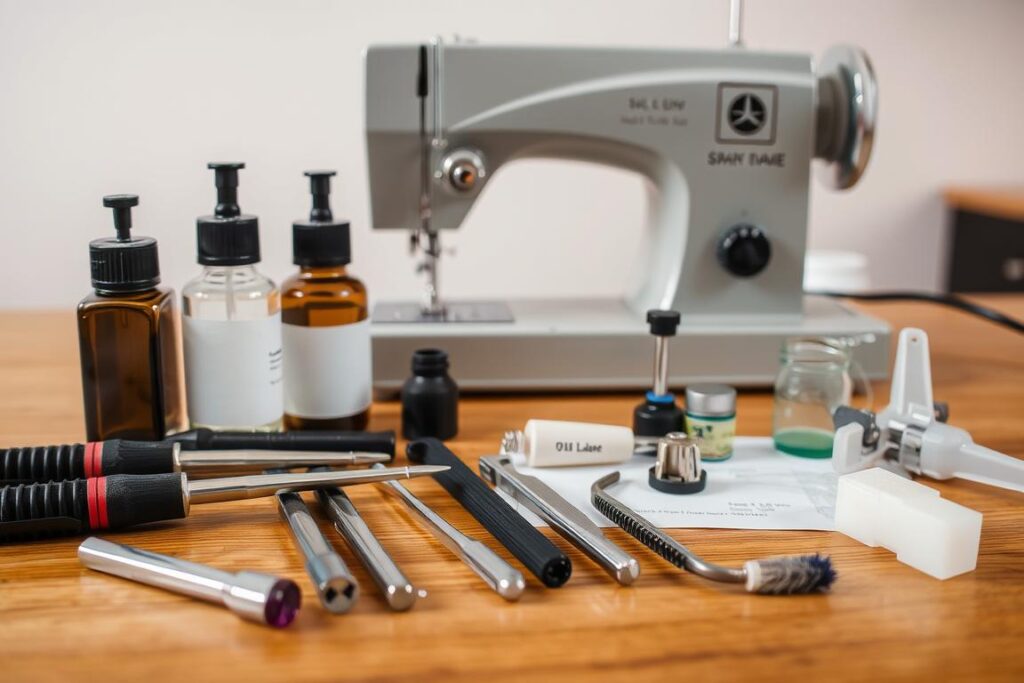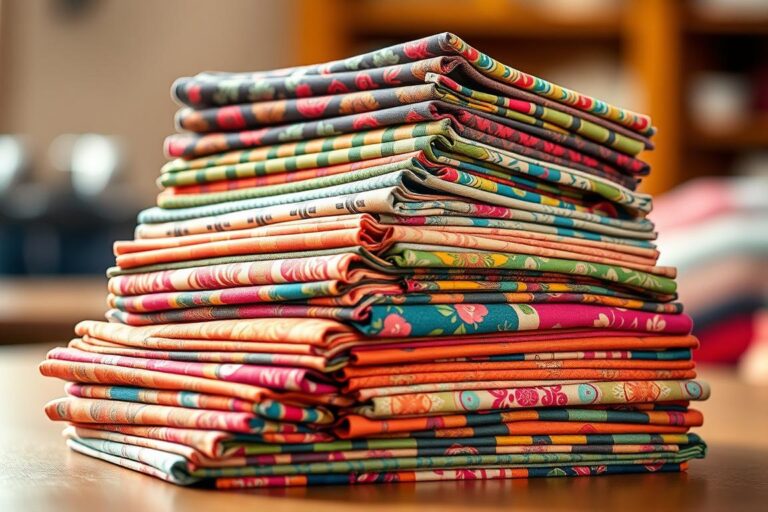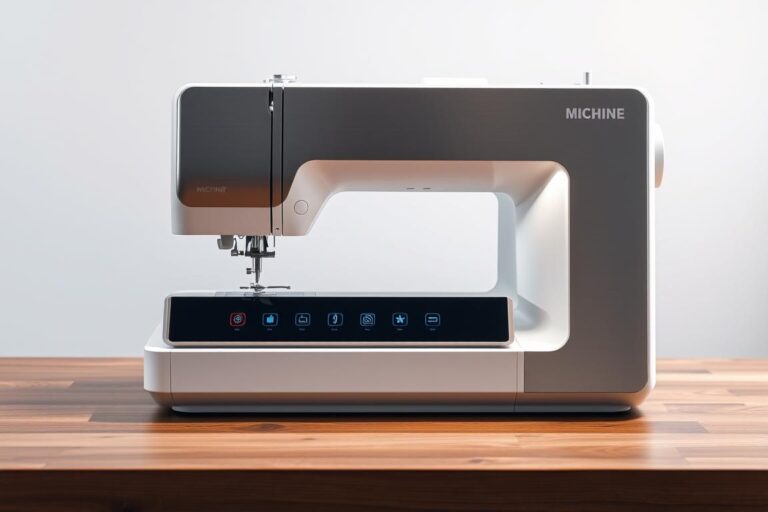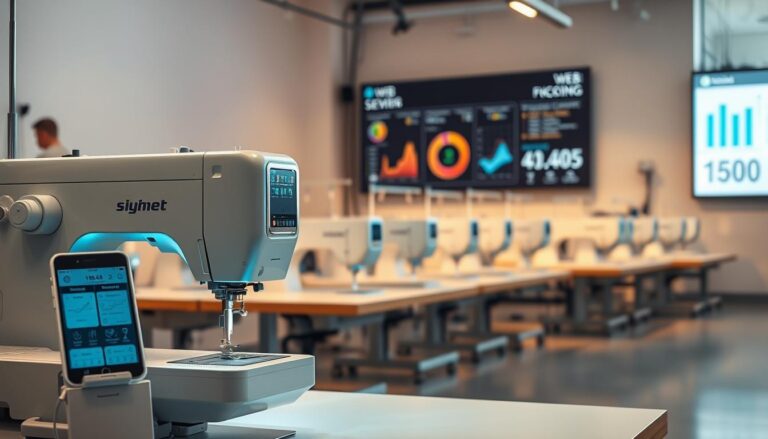Budget-Friendly Sewing Machine Accessories You’ll Love
Upgrading your craft setup doesn’t have to drain your wallet. Smart add-ons can transform basic equipment into powerful tools for quilting, garment-making, and repairs. Tested favorites from trusted brands like Brother and Singer prove that affordability meets quality.
Imagine achieving professional results with specialty tools under $20. Organizational solutions and precision attachments make every project smoother. Whether you own a Brother CS7000X or Singer Quantum Stylist, compatibility matters.
With insights from evaluating 27 models, we’ve curated picks that balance cost and performance. These game-changers unlock advanced techniques while keeping things simple. Let’s explore how small investments lead to big creative leaps!
Budget-Friendly Sewing Machine Accessories You’ll Love
Smart investments in craft tools can elevate your projects without overspending. Whether you’re a beginner or a seasoned pro, the right add-ons unlock new features and save time. Let’s dive into the best options for your setup.
Bundles often seem cost-effective, but à la carte picks let you customize. For example, the Janome HD1000 excels with heavy fabrics but lacks a buttonhole foot. Meanwhile, the Brother CS7000X includes a walking foot—a must for quilting.
Hidden costs lurk in “basic” models. The Bernette 37, for instance, requires a $65 walking foot separately. Universal sets from Madam Sew offer budget fixes, but check compatibility first!
| Brand | Included Accessories | Avg. Add-On Cost |
|---|---|---|
| Brother CS7000X | Walking foot, quilting guide | $20–$40 |
| Singer Quantum 9960 | 600 stitch options, buttonhole foot | $10–$30 |
| Janome HD1000 | Heavy-duty needle set | $50–$70 |
Third-party tools might void warranties, so weigh risks. Proper attachments prevent fabric waste—a $15 seam ripper beats ruined material! Pro tip: Repurpose household items like binder clips as makeshift guides.
Lastly, don’t skip maintenance kits. These $10–$20 sets keep your machine humming for years. Small upgrades lead to smoother stitches and bigger creative wins!
Essential Presser Feet for Every Project
Presser feet are the unsung heroes behind flawless stitches and professional finishes. These small attachments unlock advanced techniques—like free-motion quilting or invisible zippers—without upgrading your entire setup. Let’s explore how the right foot elevates your craft!
Struggling with wavy seams on knits? The Bernette 37’s lack of a walking foot causes this common issue. Meanwhile, the Brother SE700 includes nine specialized feet, proving versatility matters. For heavy fabrics, the EverSewn Sparrow 30’s walking foot grips layers evenly.
Quick comparisons:
- Zipper vs. Buttonhole: A zipper foot glides along teeth, while an automatic buttonhole foot measures spacing perfectly.
- Janome vs. Universal: Brand-specific sets (like Janome’s $50 kit) ensure compatibility, but universal options cost half as much.
Pro tip: Brother’s quick-change system lets you swap feet mid-project. No more fumbling with screws! For a budget fix, modify standard feet—use masking tape to adjust a hemming foot for silk.
Watch out for compatibility snags. The Singer HD500 won’t fit third-party quilting feet. Always check your manual before buying. And don’t forget maintenance: Clean lint from the needle area weekly to keep feet gliding smoothly.
Ready to master buttonholes? An automatic foot guarantees consistent stitches. Lower your feed dogs, attach the foot, and let your machine do the work. For free-motion hacks, drop the feed dogs and use a darning foot—no fancy tools needed!
Must-Have Extension Tables
Transform cramped workspaces into creative havens with the right add-ons. An extension table instantly boosts your machine’s capabilities, especially for quilting. The Bernette 05 Academy includes one, proving even compact models benefit from extra space.
Foldable designs like the Brother HC1850’s save room, while detachable options (CS7000X) offer stability. Need a budget fix? Acrylic sheets cut to size mimic premium surfaces. Just sand the edges for safety!
Quick comparisons:
- Quilting: 50% larger surfaces prevent fabric drag.
- Weight: Metal tables handle heavy denim; plastic warps over time.
- Storage: Slide foldable types under beds or sofas.
Position your table at elbow height to avoid strain. Universal clamps fit most machines, but model-specific attachments align perfectly. For free-motion embroidery, a non-slip mat adds grip.
Maintenance is simple: Wipe with microfiber to prevent scratches. Avoid sunlight—it warps plastic. Now, stretch out that next quilt project without compromise!
Affordable Bobbin and Needle Sets
Small but mighty, bobbins and needles are the backbone of every sewing project. The wrong choice can cause frustrating jams—like the Bernette 05’s notorious bobbin hiccups. Meanwhile, the Brother XR9550’s drop-in system glides smoothly, proving smart features matter.
Material showdown: Aluminum bobbins last longer but cost triple plastic ones. For heavy fabrics, metal prevents warping. Lightweight projects? Plastic works fine.
Needle sizes aren’t one-size-fits-all. Match them to your material:
- Denim: Size 100/16 (sharp point)
- Chiffon: Size 60/8 (microtex)
- Knits: Ballpoint needles prevent snags
| Brand | Bobbin Type | Needle Compatibility |
|---|---|---|
| Klasse | Universal plastic | All home machines |
| Schmetz | Aluminum premium | Industrial & home |
| Janome | Proprietary plastic | Janome models only |
Buying in bulk saves cash—500-count needle sets cost 40% less per unit. Color-coded organizers prevent mix-ups. Pro tip: Freeze needles for 10 minutes before use to reduce friction!
Dispose of dull needles safely in sealed containers. Many craft stores recycle metal bobbins too. These small upgrades keep your stitches flawless and your workspace eco-friendly.
Thread Organizers and Storage Solutions
A well-organized workspace saves time and sparks creativity—let’s explore smart storage solutions! Tangled spools and misplaced colors vanish with the right system. The Everything Mary case, for example, offers seven pockets for easy sorting.
Wall-mounted vs. desktop: Pegboards maximize vertical space, while rotating desktop trays keep essentials handy. For small spaces, repurpose spice racks—their tiers fit spools perfectly!
“Proper thread care doubles its lifespan. Always shield from sunlight and humidity.”
Delicate threads need extra protection. Silica gel packets in storage boxes prevent moisture damage. For UV fading, stash colorful threads in opaque containers or drawers.
| Type | Best For | Durability |
|---|---|---|
| Wooden racks | Vintage design | 10+ years |
| Acrylic organizers | Modern setups | 5–7 years |
| Travel cases | On-the-go sewing | 3–5 years |
Labeling systems tame chaos. Use numbered tags or color swatches for 200+ shades. DIY mason jars with drilled lids make charming displays—just add LED lights for a crafty glow!
Pro tip: Anti-tangle caps keep spools neat. For vintage threads, gently clean with a soft brush before storing. Now, stitch faster without the hunt for supplies!
Best Budget Sewing Machine Lights
Brighten your stitching with lighting solutions that sharpen every detail. Poor visibility strains eyes and hides imperfections—like the Brother CS7000X’s dim machine light. Meanwhile, the Singer Quantum Stylist’s strip design illuminates evenly. Let’s find your perfect match!
Lumens matter: Aim for 300–500 for precision work. Lower values create shadows, while higher ones may glare. Pro tip: Position lights at 10 o’clock to reduce hand shadows!
Power options:
- USB-powered: Portable but requires outlets.
- Battery-operated: Flexible placement, though less bright.
Magnetic bases cling to metal frames, while clip-ons suit plastic bodies. For vintage machine lovers, retrofit kits preserve original charm with LED upgrades.
“Daylight-simulation bulbs reduce eye fatigue by 40% compared to warm lights.”
Child-safe LEDs stay cool, and energy-efficient models slash bills. Some advanced features even project stitch patterns onto fabric—no more guessing!
Quick fixes: Tape a book light to your presser foot for instant shadow-free zones. Now, thread needles effortlessly and spot skipped stitches instantly!
Durable Seam Rippers Under $10
Precision tools shouldn’t cost a fortune—discover seam rippers that deliver pro results under $10! Modern designs like Fiskars’ safety blades feature micro-grooved edges that glide through fabric without snags. Meanwhile, Otylzto’s clips double as stitch markers—proof that clever engineering maximizes value.
Ergonomic handles reduce hand fatigue during marathon sewing sessions. Traditional L-shaped models work, but contoured grips (like Dritz’s 2-in-1) prevent blisters. Left-handed versions finally get love too—look for ambidextrous labels.
“Replace blades every 6 months for flawless performance. Dull tools tear material and waste time.”
Multi-tool versions shine for travel. TSA-compliant models under 4″ slip into carry-ons, while built-in needle threaders add convenience. Child-safe locks make these ideal for shared spaces.
Historically, 1890s rippers were blunt chisels. Today’s precision tools can even carve decorative edges! Recycle old blades as scrapers or jewelry findings—just file sharp edges smooth.
Quilting Guides for Beginners
Quilting opens doors to endless creativity—let’s start with the right tools! Whether piecing a simple patchwork or tackling free-motion designs, a few essentials make all the difference. The Brother XR9550’s 165 built-in stitches and Juki TL-2000Qi’s knee lever are game-changers for beginners.
Walking foot essentials: This attachment grips layers evenly, preventing puckering on thick fabrics. Pair it with 1/4″ seam tape for precision—just stick it to your machine’s throat plate as a visual guide.
Basting spray alternatives: Skip pins with washable glue sticks or lightweight fusible web. Perfect for delicate silks or bulky denim!
Free-motion basics: Drop your feed dogs, lower the presser foot pressure, and practice doodling on scrap fabric. Start with small motifs like loops or stars.
| Batting Type | Best For | Cost per Yard |
|---|---|---|
| Cotton | Breathable, crinkly texture | $8–$12 |
| Polyester | Lightweight, easy care | $5–$9 |
| Blend (80/20) | Balance of drape and durability | $10–$15 |
Template plastic hacks: Cut old report covers into reusable shapes for appliqué or hexagons. Sand edges smooth to avoid snags.
Quilt-as-you-go: Assemble blocks individually, then join them—no bulky wrestling matches with a full quilt!
“Community quilt-alongs teach techniques while fostering connections. Check local guilds or #QuiltWithMe hashtags!”
Preserving heirlooms: Store finished quilts in acid-free boxes, wrapped in cotton sheets. Rotate folds yearly to prevent creases.
Portable Sewing Machine Cases
Protect your gear in style with portable cases that combine security and flair! Whether commuting to classes or storing at home, the right carrier prevents damage and organizes essentials. The Everything Mary rolling case proves mobility doesn’t sacrifice storage—its compartments fit threads, bobbins, and even a 15-pound machine.
Material showdown: Waterproof nylon resists spills, while quilted padding absorbs shocks. For airline travel, stick to 22″ x 14″ x 9″ dimensions—the Brother XR9550’s 10.12lb frame fits perfectly! Vintage lovers can convert thrifted bags into unique carriers; just line with foam for cushioning.
Smart features we love:
- Lockable zippers: Secure your investment during transit.
- Collapsible frames: Save space in apartments or small studios.
- Climate control: Silica gel pockets combat humidity damage.
“A well-padded case extends your machine’s lifespan by 30%, says the Crafting Safety Alliance.”
Personalize with embroidered initials or bold patterns. For multi-tool setups, tiered designs hold machines, irons, and cutting mats. Pro tip: Use removable dividers to reconfigure spaces for different projects. Now, stitch anywhere with confidence—your tools stay pristine!
Buttonhole Attachments Worth Buying
Perfect buttonholes elevate garments from homemade to professional—let’s explore top attachments! The Janome C30’s manual system requires patience, while the Brother ST371HD’s automatic features deliver flawless results in seconds. Pro tip: Match the foot type to your fabric weight for crisp edges.
- Keyhole: Reinforced tops for frequent use (think coats).
- Rounded: Delicate finish for blouses and lightweight fabrics.
Thick materials like denim? Add a stabilizer underneath. Vintage machines thrive with adapter plates—just check spindle sizes first!
| Model | Buttonhole Type | Fabric Limit |
|---|---|---|
| Janome C30 | Manual 4-step | Medium-weight |
| Brother ST371HD | Automatic 1-step | Heavy-duty |
Troubleshooting tips:
“Uneven tension? Re-thread completely and test on scrap fabric first. Decorative threads work best with a size 14 needle.”
Repurpose attachments for belt loops—just adjust the stitch length. Clean lint weekly with a soft brush to prevent thread jams. Now, tackle buttonholes with confidence!
Fabric Scissors That Won’t Break the Bank
Every crafter knows: dull scissors ruin projects before they begin. The right pair blends affordability with precision—whether snipping delicate chiffon or tackling denim. Let’s compare top picks that keep your fabric flawless!
Steel vs. titanium: German-engineered steel (like Fiskars) resists rust, while titanium coatings add durability. For heavy fabrics, titanium’s lightweight strength outperforms. Budget tip: Sandpaper restores slightly dulled edges!
| Type | Best For | Price Range |
|---|---|---|
| Stainless Steel | Everyday cotton/linen | $15–$25 |
| Titanium-Coated | Denim/leather | $30–$50 |
| Ceramic Blades | Silk/synthetics | $40–$60 |
Left-handed crafters rejoice! Brands like Kai and Mundial now offer mirrored designs. Pinking shears? Try OZXTYO’s chalk-combo set—mark and cut in one step.
“Hone blades monthly with a glass jar: Simply make 10–15 angled cuts for a DIY sharpen.”
Color-coded handles prevent mix-ups in shared home studios. For arthritic hands, spring-action models reduce strain by 70%. Historic Japanese scissors (think Havel’s) still lead in balance—their 400-year-old forging techniques ensure longevity.
Safety first: Rounded tips protect kids, while engraving deters theft. Match blades to your project—micro-serrated edges grip slippery satin, while wide bows handle bulkier layers. Now, slice through challenges with confidence!
DIY Maintenance Kits
Keeping your equipment in top shape doesn’t require expensive tools—just smart routines! The Janome HD3000 thrives with monthly oiling, while Brother models need grease on feed dogs. Both brands share common needs: clean bobbins, aligned tension springs, and dust-free machine interiors.
- Natural bristle brushes: Sweep lint from under the needle plate without scratching.
- Sewing-grade oil: Apply sparingly—one drop moves gears smoothly.
- Toothbrush hack: Old soft-bristle brushes clean bobbin cases better than Q-tips!
Vintage models demand extra love. For 1950s Singers, use mineral oil instead of modern synthetics. Always test cleaners on hidden spots first—some plastics yellow with alcohol.
| Task | Janome HD3000 | Brother CS7000X |
|---|---|---|
| Lubrication | Every 30 hours | Every 50 hours |
| Belt check | Annually | Bi-annually |
| Decalcify | Steam function only | Not applicable |
“Calibrate tension springs every six months for perfect stitches. Mark the date on masking tape under your machine!”
Error codes flashing? Reset by unplugging for 10 minutes—solves 80% of electronic glitches. For persistent issues, note the code and consult manuals before calling pros.
Save time with these schedules:
- Weekly: Brush out lint, check needle straightness
- Monthly: Oil moving parts, inspect belts
- Yearly: Full calibration, replace felts
Stitch a custom dust cover from quilt scraps—it blocks 90% of airborne debris. Now enjoy smoother projects with these features of proactive care!
Budget-Friendly Thimbles and Finger Guards
Never underestimate the power of a good thimble—your fingers will thank you! These tiny protectors prevent soreness and boost precision when pushing needles through tough materials. The Maxfanay kit proves you don’t need luxury prices for quality protection.
- Traditional metal: Brass or steel versions offer durability but can feel cold
- Modern silicone: Flexible and grippy, perfect for arthritic hands
- Adjustable sizes: Look for sizing guides—a snug fit prevents slips
Quilters favor open-top designs for quick changes, while embroidery lovers choose tapered tips. Vintage collectors adore 1920s silver thimbles with intricate engravings—functional art!
Prevent calluses with proper positioning. Push the needle with the side of your thimble, not the tip. Magnetic models keep pins handy, saving precious time during projects.
“Historical fact: Roman thimbles had spikes inside for better grip—today’s smooth designs protect delicate fabric.”
Modern features impress too:
- Heat-resistant: Ideal for quilters who finger-press seams
- Threading aids: Built-in loops help with stubborn needles
- Personalized: Engrave initials or favorite motifs
For arthritis sufferers, wide-band silicone versions reduce joint strain. Pair them with the 600PCS safety pins from our data set for a complete protection kit. Now stitch longer with happy fingers!
Measuring Tools for Precision
Precision starts with the right tools—let’s measure up for flawless projects! Whether marking quilting lines or drafting patterns, accurate measurements separate amateur efforts from professional results. Magnetic seam guide upgrades, like Otylzto’s clip-on system, stick firmly to metal plates without slipping.
Laser vs. mechanical gauges: Digital displays offer millimeter accuracy, while analog tools never need batteries. For curved hems, a French curve’s organic design adapts to necklines and armholes effortlessly. Bias tape makers? They transform fabric strips into polished edges in minutes!
- Hera marker alternatives: Bone folders or dinner knives crease fabric without residue
- Repurposing Lego blocks: Their uniform studs make perfect 1/4″ seam spacers
- Washable fabric pens: Choose water-soluble over air-disappearing for control
“Historic tailor’s chalk contained gypsum—modern versions use eco-friendly calcium carbonate.”
Digital angle finders shine when setting up features like mitered corners. Their LCD screens display exact degrees, eliminating protractor guesswork. For large projects, adhesive guide grids keep fabric alignment consistent across yards.
| Tool | Best Use | Budget Tip |
|---|---|---|
| T-square | Pattern drafting | Use a book edge as a straightedge |
| Seam gauge | Hem allowances | Notch ruler edges with a file |
| Project grids | Quilt block layout | Repurpose vinyl floor tiles |
Maintain metal tools with occasional waxing to prevent rust. Store them flat to avoid warping—especially important for acrylic templates. Now measure with confidence, knowing every cut and stitch lands exactly where intended!
Where to Find Deals on Sewing Accessories
Smart shoppers know great tools don’t require big spending—let’s uncover hidden gems! From seasonal markdowns to loyalty rewards, strategic sourcing stretches every dollar. Madam Sew’s affordable sets frequently appear in holiday sales, while Singer Heavy Duty 4423 users share discount alerts in forum discussions.
January and July bring the deepest cuts—retailers clear inventory post-holidays. Sign up for newsletters at Joann or Michaels to get early access. Educator discounts offer year-round savings; just present school ID at checkout. Some brands like Brother extend this to online purchases too!
Refurbished programs through authorized dealers provide like-new machine parts at 40% off. These often include warranties—crucial for motors and circuit boards. Local swap meets surprise with vintage treasures; bring cash for bargaining power on presser feet or bobbins.
“Our co-op bought bulk thread directly from Gutermann—saved $120 by splitting 100 spools!”
Digital tools streamline the hunt. Honey tracks price drops across stores, while eBay auctions reward patience. Set alerts for specific models like the Singer 4423. Manufacturer rebates appear sporadically—check sites like SewingDeals.com for updated listings.
| Deal Type | Savings Range | Best For |
|---|---|---|
| Flash Sales | 30–60% off | Limited-quantity items |
| Open-Box Returns | 15–40% off | Like-new condition |
| Reward Points | 5–20% back | Frequent shoppers |
Maximize store credit by trading unused supplies—some shops offer bonuses during Earth Month. With these strategies, building a complete toolkit takes less time and money than expected. Now go forth and stitch smarter, not harder!
Conclusion
Great tools multiply creativity—let’s celebrate how far we’ve stitched together! Each add-on from our list extends your machine’s life and unlocks new techniques. Remember, even small upgrades like a $10 thimble or LED light yield daily rewards.
Keep exploring! Join best sewing forums like PatternReview to swap tips. Future trends? Watch for smart sensors that auto-adjust tension. Before storing gear, dust bobbins and oil hooks—a 5-minute habit prevents repairs.
Recycle old needles at craft stores, and tag projects with #UpcycledStitches. Your next masterpiece awaits—what will you create today?
